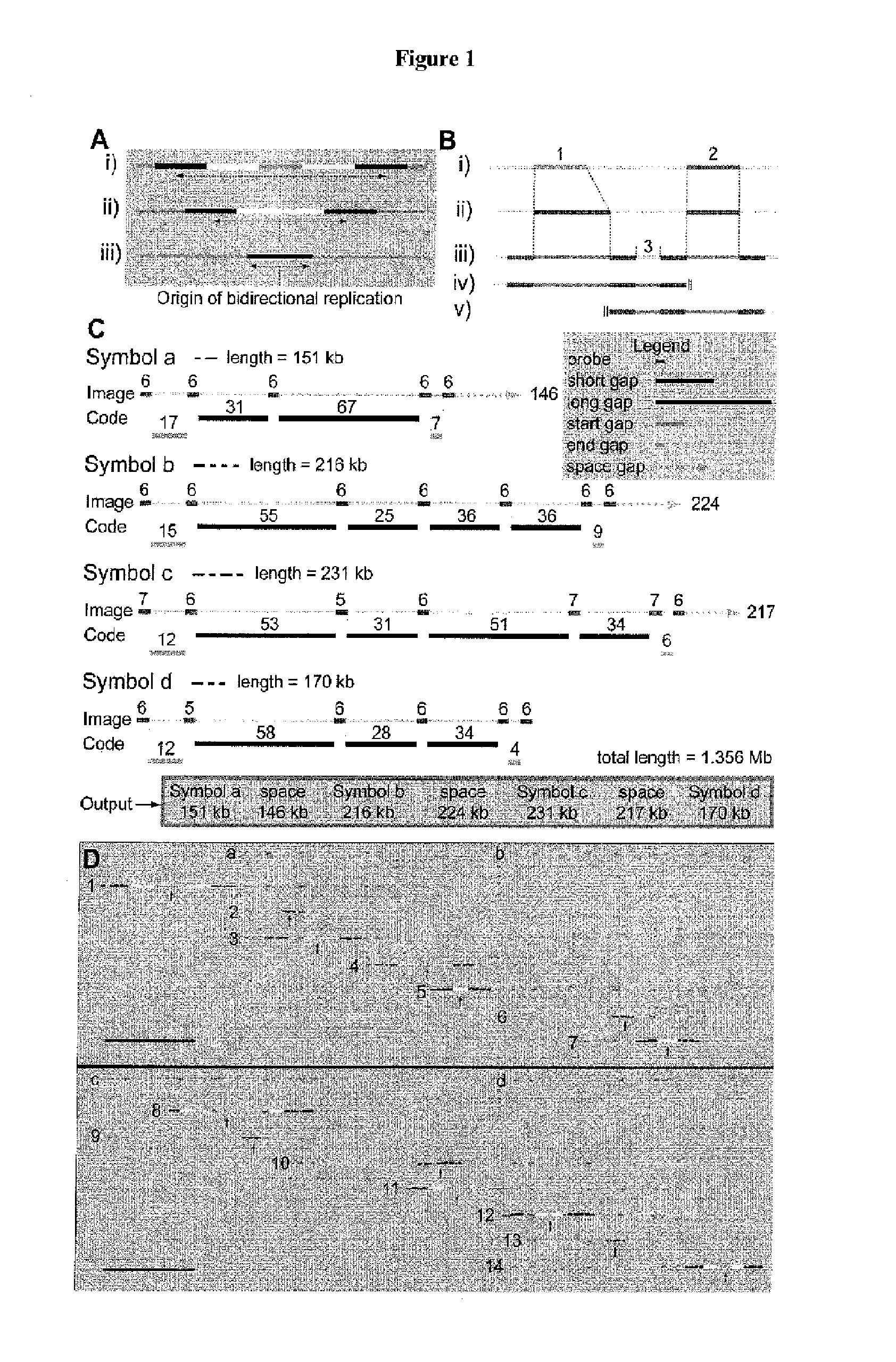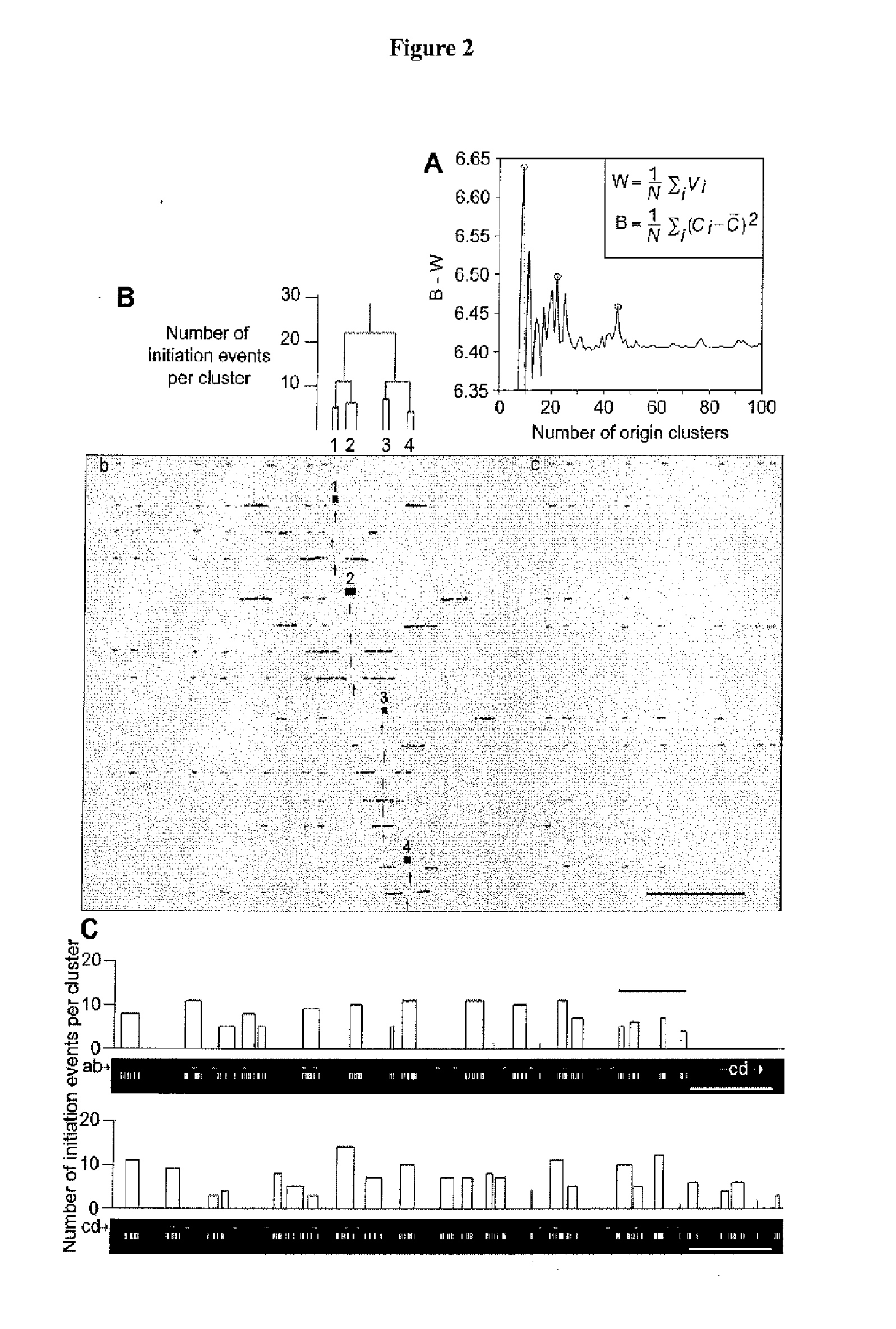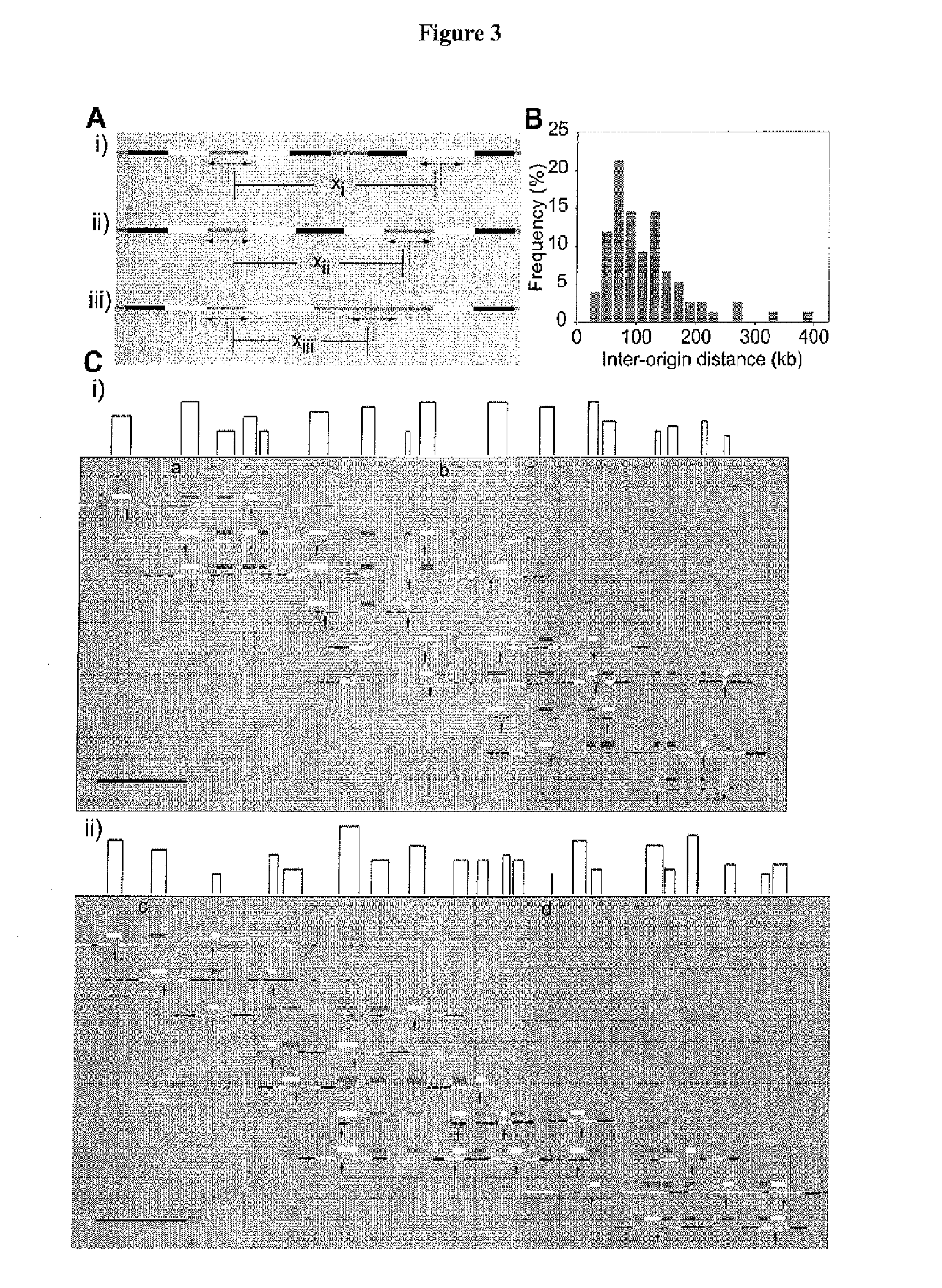Genomic morse code
a gene and morse technology, applied in the field of gene expression morse code, can solve the problems of limited number of different detectable elements, limited range of detection methods, and rapid reaches of the target's limit,
- Summary
- Abstract
- Description
- Claims
- Application Information
AI Technical Summary
Benefits of technology
Problems solved by technology
Method used
Image
Examples
example
[0170]Mammalian DNA replication origins localize to sites that range from bps to tens of kbs. A regular distribution of initiations in individual cell cycles suggests that only a limited number of these numerous potential start sites are converted into activated origins. Origin interference can silence redundant origins; however, it is currently unknown whether interference participates in spacing functional human initiation events. By using a novel hybridization strategy, Genomic Morse Code, on single combed DNA molecules from primary keratinocytes, the inventors report the initiation sites present on 1.5 Mb of human chromosome 14q11.2. The inventors confirm that initiation zones are widespread in human cells. Origins used in individual cell cycles are less abundant than the potential sites of initiation and their limited use produces regular inter-origin firing distances.
[0171]Between-zone interference decreases in proportion to the distance from the active origin, while within-zo...
PUM
| Property | Measurement | Unit |
|---|---|---|
| pH | aaaaa | aaaaa |
| temperature | aaaaa | aaaaa |
| temperature | aaaaa | aaaaa |
Abstract
Description
Claims
Application Information
 Login to View More
Login to View More - R&D
- Intellectual Property
- Life Sciences
- Materials
- Tech Scout
- Unparalleled Data Quality
- Higher Quality Content
- 60% Fewer Hallucinations
Browse by: Latest US Patents, China's latest patents, Technical Efficacy Thesaurus, Application Domain, Technology Topic, Popular Technical Reports.
© 2025 PatSnap. All rights reserved.Legal|Privacy policy|Modern Slavery Act Transparency Statement|Sitemap|About US| Contact US: help@patsnap.com



